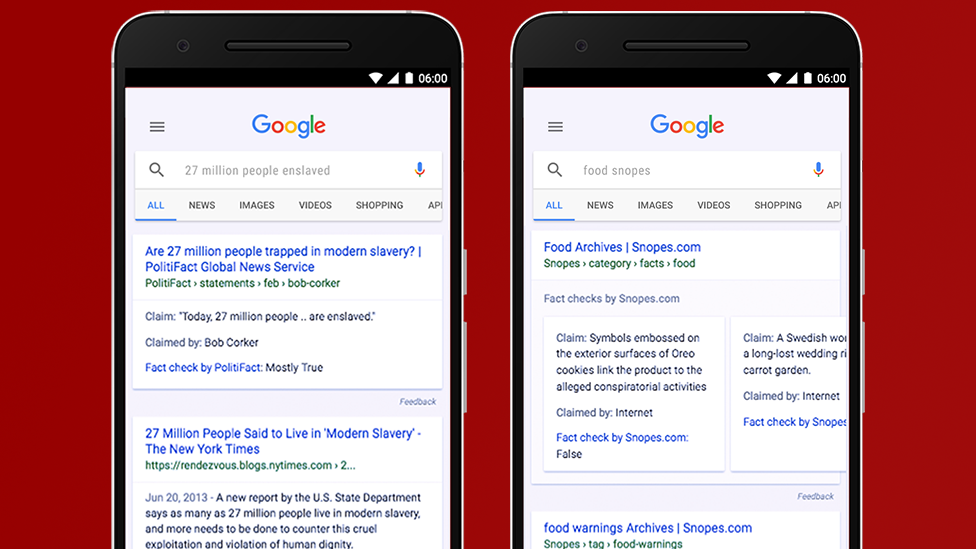Google adds search results 'fact check' flag
- Published
- comments

Google has added its fact check feature to search results globally, in a bid to help tackle the spread of "fake news".
The search giant will now highlight "authoritative sources" in search results, with a summary of claims that have been fact-checked.
Google says sites will be judged authoritative by an algorithm and the company will not be fact-checking news stories itself.
On Thursday, Facebook announced a campaign to help people spot fake news.
Google introduced its fact check feature on its News search site in October, but has now added it to its regular search results.
Publishers who have investigated a claim, for example a politician's statements, will be displayed more prominently.
A summary of the fact-checked statements and whether they are judged to be true or false will also appear.
However, the feature will not affect the order of search results and will not label sites known to spread false information as untrustworthy.
Google acknowledged that different publishers may draw opposing conclusions about the validity of a news story or statement, but said the feature would help people understand the "degree of consensus" on a topic.

Analysis by Chris Foxx, BBC technology reporter
Tackling the spread of false information is a big task for websites as large as Google and Facebook, given the volume of data involved.
Facebook's Mark Zuckerberg has been clear he does not want to employ humans to make judgements about whether websites are trustworthy.
Now Google is following his lead by placing its trust in its algorithms.
Of course, algorithms can be manipulated and algorithms can get it wrong. In March, Google was found to be offering up some far-fetched claims as "instant answers".
Google also says it will display conflicting fact checks side-by-side when websites have drawn different conclusions.
That may leave people more confused than before - but perhaps, at least, it will encourage them to question what they read online.
- Published1 February 2017

- Published30 January 2017

- Published6 April 2017